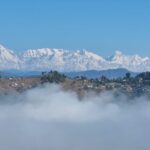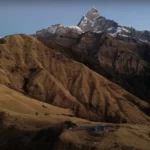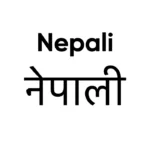Nepal has become synonymous with its unique and majestic Himalayan landscapes. But there is much more to this country than meets the eye. For centuries, Nepal has boasted a unique and ancient practice – honey hunting.
The Gurung tribesmen in Nepal are skilled at honey hunting. They venture into the foothills of the Himalayas to collect honeycomb, using only handmade rope ladders and long sticks called tangos. Honey bees’ nests are typically found on steep, inaccessible cliffs facing southwest, protecting from predators and direct sunlight exposure. This dangerous activity requires bravery and expertise.
A popular destination for Honey Hunting in Nepal
Nepal offers numerous honey-hunting places, with Kaski and Lamjung (Annapurna Region) being the favoured destinations. People usually go for this activity in villages such as Bhujung, Nai Chi, Pasgaon, Naya Gaun, Ludhi, and Dare.
Traditional Honey Harvesting Methods

The honey hunter in Nepal uses a traditional method to harvest wild Honey from the cliffs. They climb to the hives using handmade ladders and ropes and then use a smoke pot to calm the bees. Once the bees are subdued, the honey hunter carefully cuts off the honeycomb and places it in a basket. The Honey is then extracted by crushing the comb and filtering out the Honey. It’s dangerous, but honey hunters have been doing it for generations and have developed a deep respect for the bees and their environment.
Hallucinogenic Wild Honey
Red Honey, or Himalayan Red Honey or Deli Bal, is a unique type of Honey produced when bees consume pollen from rhododendron flowers. However, it’s important to note that this Honey can be hallucinogenic if consumed in large quantities. It has a slightly bitter taste and a reddish colour.
What Bee Makes Hallucinogenic Wild Honey?
The Apis laboriosa is a species of Bee known for producing a unique type of Honey with hallucinogenic properties. Certain cultures highly seek this Honey for its supposed medicinal and spiritual benefits. However, it is important to note that consuming this Honey can be dangerous and should only be done under the guidance of a trained professional.
The Best Month for Honey Hunting
The best honey-hunting seasons in Nepal are autumn (September to November) and spring (March to May) due to their optimal weather conditions. These seasons offer clear mountain views on sunny days, making them ideal for collecting Honey. Gathering Honey during spring and autumn is customary.
The benefit of wild Honey found in Nepal
Wild Honey found in Nepal is known for its numerous health benefits. It is believed to have antibacterial and antioxidant properties, which can help boost the immune system and prevent diseases. In addition, it has been used in traditional medicine to treat respiratory problems, digestive issues, and wounds. Wild Honey is also a good energy source and natural sweetener.
Side effects of wild Honey in Nepal
Consuming wild Honey can lead to severe side effects, including nausea, vomiting, dizziness, sweating, and impaired consciousness. It can also cause cardiac problems such as bradycardia and hypotension.
Threat to Traditional Honey Hunting Practice
The rising popularity of Himalayan honey in Japanese, Chinese, and Korean traditional medicines and for treating injuries and infections poses a significant risk to the conventional and responsible practice of honey hunting.







Leave a Reply